Optimus, first introduced by Tesla in 2021, is a humanoid robot with the ambition to revolutionize the automation industry.
The latest video of Tesla’s Optimus robot is rapidly circulating on social media, and it appears to be in use at Tesla factories for sorting batteries (specifically Tesla’s 4680 batteries).
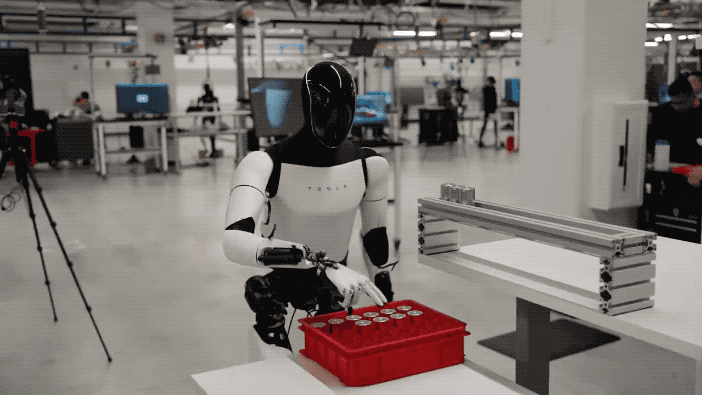
In 2021, Elon Musk surprised the world by introducing Optimus, a humanoid robot designed to revolutionize the automation industry. With the bold ambition to become the “most useful robot in the world”, Optimus promises immense potential across various sectors.
One highlight of this launch video is that Optimus completes tasks in the factory entirely autonomously, without any human intervention throughout the process.
From Optimus’s perspective, it can also pick up and place a spilled battery back in its correct position.
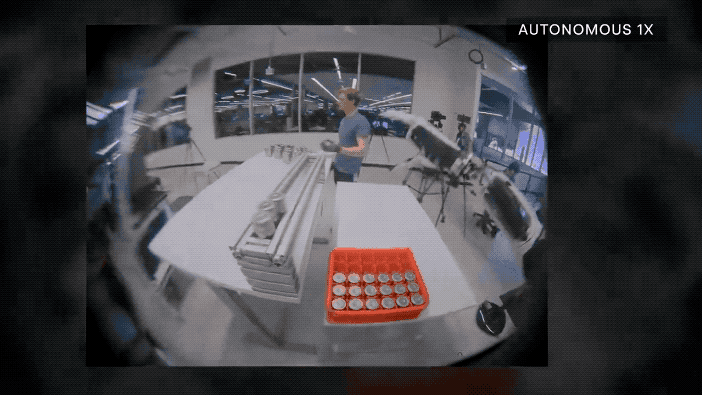
Optimus can work continuously without needing rest and can perform tasks with high precision, enhancing efficiency and productivity across various fields. Additionally, the use of robots can help reduce labor costs and operational expenses in the long run.
Regarding Optimus’s hand, Nvidia scientist Jim Fan praised it, stating: “Optimus’s hand is among the most dexterous five-fingered robot hands in the world. It features tactile sensors, 11 degrees of freedom (DoF) compared to many competitors that only have 6-7 DoF, and the capability to endure multiple interactions with objects without requiring constant maintenance…”
And just below Jim Fan’s comment, Musk also chimed in, revealing even more significant news: “By the end of this year, Optimus’s hand will have 22 degrees of freedom.”
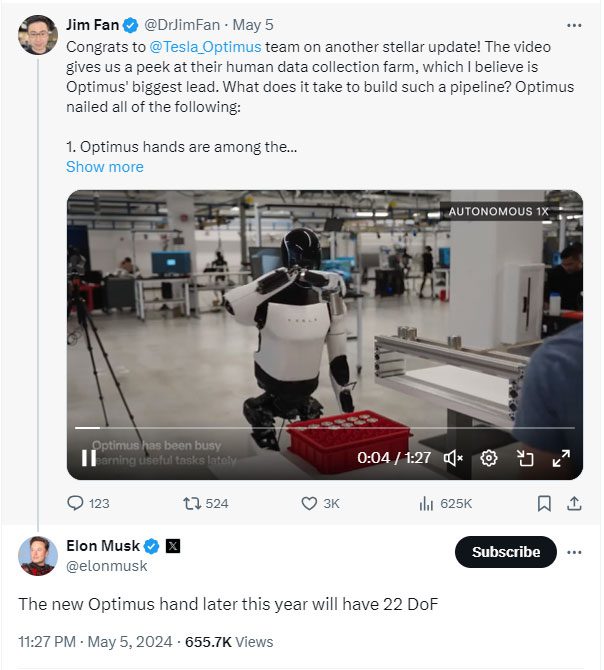
DoF refers to the number of independent movements a joint can perform. A higher DoF allows for more complex and seamless movements.
First and foremost, regarding the neural network, we can glean from the video’s subtitles that Tesla has deployed an end-to-end neural network for Optimus to train in battery sorting tasks.
Thus, the data that Optimus uses comes solely from 2D cameras and tactile sensors, which adjust the force of its hand while directly generating joint control sequences.
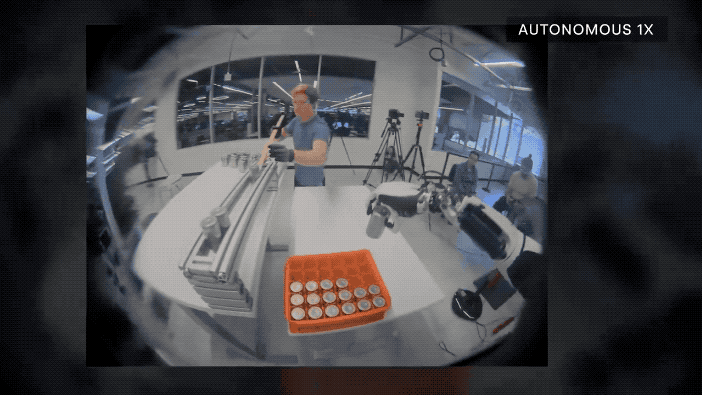
Optimus is expected to have numerous applications across various fields, including: manufacturing support; customer service; healthcare; agriculture…
Tesla engineer Milan Kovac further revealed that this neural network runs entirely on the robot’s FSD computer and is powered by an integrated battery: “As we add more diverse data during training, a neural network can perform multiple tasks.”
According to the company, the training data is collected through remote human operation and expanded across Tesla’s entire fleet for various tasks. Optimus is currently being tested at one of Tesla’s factories, with the rate of human intervention continuously decreasing.
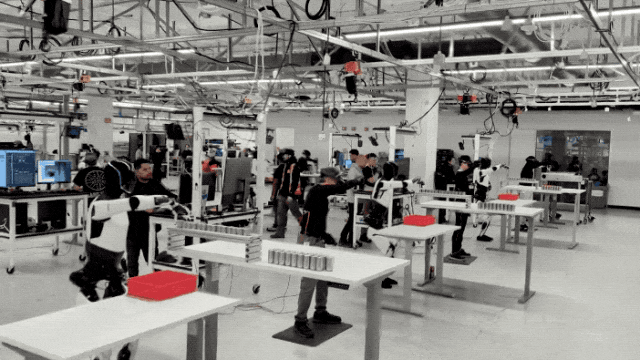
In practice, Optimus is being tested and improved daily while performing tasks at Tesla’s factory. This robot can even navigate around the office without any issues, although Tesla is still working on making it move faster.

While Optimus promises tremendous potential, numerous challenges remain to be addressed before it can be widely deployed. Developing a humanoid robot capable of performing complex tasks in real-world environments still presents significant technological challenges. Currently, Optimus is still in development and may be very expensive when commercialized. Additionally, the use of humanoid robots may raise ethical concerns, such as their impact on employment and human safety.
These updates align with what Tesla CEO Elon Musk has stated previously. He mentioned in the company’s first-quarter earnings call that Optimus would be capable of performing “useful” tasks in the factory by the end of this year. Tesla plans to utilize Optimus in its factories by the end of this year and may sell them to other companies by the end of 2025.
Optimus possesses outstanding features that set it apart from other robots:
- Bipedal movement: Unlike bulky wheeled robots, Optimus can move flexibly on two legs, adapting to various complex terrains and executing tasks that require precise movement.
- Environmental interaction: Thanks to advanced sensor and camera systems, Optimus can intelligently perceive and interact with its surroundings. It can grasp and manipulate objects with high precision, even using tools flexibly.
- Learning and adaptation: Optimus is equipped with artificial intelligence (AI) that enables it to learn from experience, adapt to new tasks, and automate processes. This allows Optimus to accomplish various tasks without detailed programming.
- Teamwork: Optimus can coordinate and work alongside other robots or humans to complete complex tasks. This capability opens up immense potential for Optimus’s application across various fields.
Tesla releases video showcasing the sorting capability and yoga exercises of Optimus robot
Brutal robot attack on engineer at Tesla factory: Has the scariest future scenario occurred?
Billionaire Elon Musk unveils the “promising” humanoid robot


















































